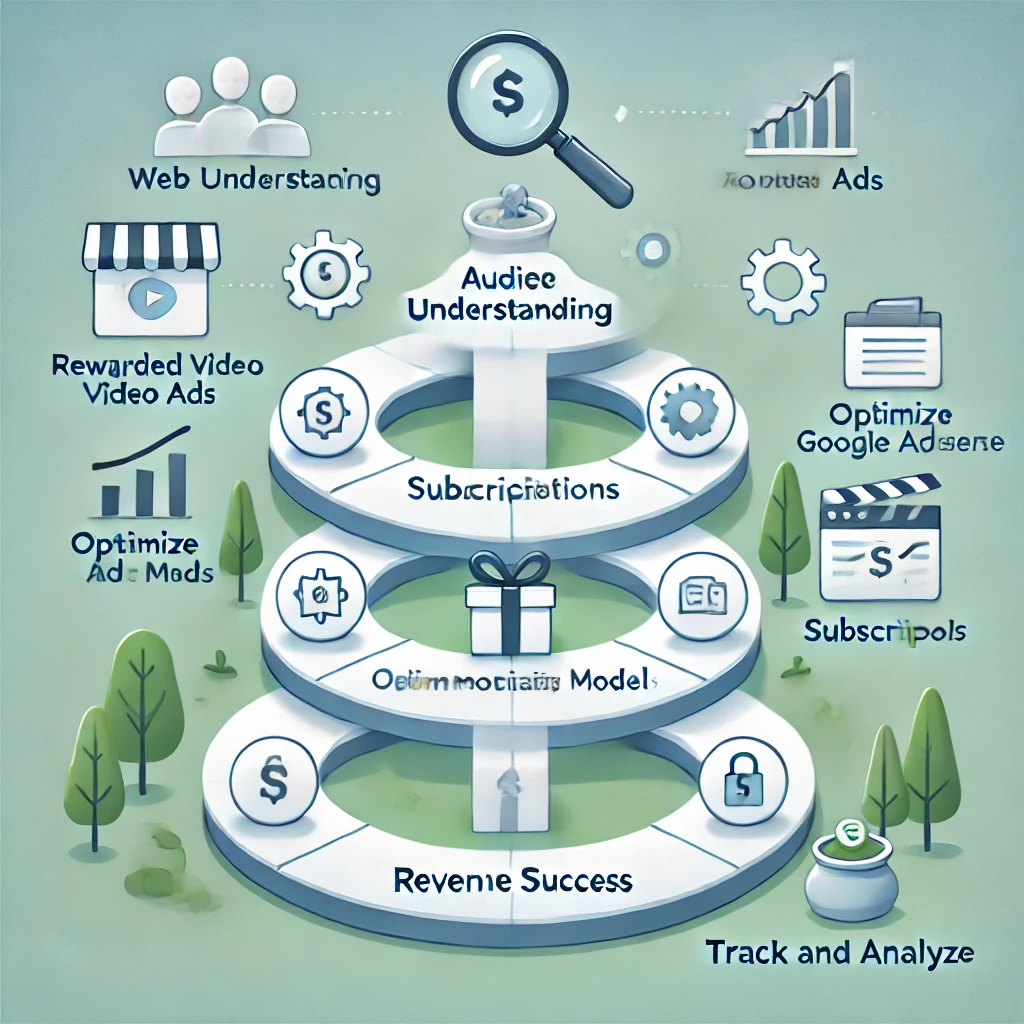Why Video Ads Are a Strong Monetization Choice
As app developers explore monetization tools, video ads are gaining prominence for their effectiveness in boosting revenue. When implemented thoughtfully, video ads can add a profitable revenue stream without heavily impacting user experience. However, to maximize the benefits, it’s crucial to choose the right video ad network and understand the different approaches to implementing video ads within apps. This guide breaks down the key considerations and steps developers should take when integrating video ad monetization.
Video ads have proven to be one of the most engaging ad formats, with higher click-through rates and completion rates than other digital ad types. Advertisers are increasingly prioritizing video due to its impact on brand awareness and user engagement, which means a substantial ad budget is being allocated toward video ad inventory. For developers, this translates to higher eCPM (effective Cost Per Thousand Impressions) and ARPDAU (Average Revenue Per Daily Active User), making video ads a lucrative option in the competitive app monetization landscape.
Who? – Choosing the Right Video Ad Network
Selecting the right video ad network is foundational to successful monetization. However, choosing a network can be challenging, given the sheer number of providers in the market, each offering unique features, pricing models, and ad formats. Here’s a step-by-step guide on evaluating and choosing a video ad network that aligns with your monetization goals:
Step 1: Start with a Trusted List
Many developers begin by exploring the Facebook Developers Ad Provider list, which includes established monetization platforms that often span both web and mobile. This directory offers a solid starting point as it lists platforms recognized for compatibility with game and app monetization needs.
Step 2: Narrow Down Your Options by Platform Compatibility
Different ad networks specialize in different platforms. Some networks may excel in mobile app ads (iOS, Android), while others may offer better solutions for web apps or desktop games. Ensure the network you’re considering is optimized for the platforms where your app is active. Choosing a network compatible with both web and mobile can provide flexibility, especially if you’re looking to scale across multiple devices.
Step 3: Assess Ad Formats and Features
Video ad formats vary significantly, and the right format depends on your app’s user experience and monetization strategy. The two main types to consider are:
- Pre-Roll Ads: These ads play before users can access content or game sessions. They’re common in media-focused apps but may interrupt gameplay, which can deter players.
- Rewarded Video Ads: Rewarded ads allow users to opt into watching a video in exchange for in-app rewards, such as extra lives or currency. This format is popular in gaming apps due to its high engagement and player acceptance.
Other features to assess include post-back call options (such as browser or server-to-server callbacks), which track user interactions with ads, providing valuable data to help optimize ad campaigns.
Step 4: Research Revenue Models and Payment Terms
Different networks offer different revenue models, such as Cost Per Impression (CPM), Cost Per Click (CPC), and Cost Per Completed View (CPCV). Understanding these models will help you select a network that aligns with your revenue expectations. Additionally, review the payment terms, including minimum payout thresholds, payment frequency, and available payment methods, to ensure they meet your financial needs.
How? – Implementing Video Ads Effectively
Continuing on Why Video Ads Are a Strong Monetization Choice Post, once you’ve selected a video ad network, the next step is integrating ads in a way that enhances revenue without negatively impacting user experience. Here are key implementation considerations:
1. Choose Natural Ad Placements
The placement of video ads can significantly impact user experience. Consider where ads naturally fit within your app’s flow. For gaming apps, between-level screens or after completing a level are common placements. For media or content apps, ads can be placed before a video or between articles. Avoid intrusive placements that may frustrate users and cause them to abandon the app.
2. Test Ad Frequency and Length
Ad frequency can directly affect player retention, so it’s essential to test different intervals to find the balance between revenue and user experience. Some developers find that displaying ads every third or fourth game session is less intrusive, while others may experiment with shorter ad intervals for more aggressive monetization. Ad length also matters; 15- to 30-second ads tend to perform well, with completion rates generally higher for shorter ads. Testing different frequencies and lengths can help optimize performance without losing players.
3. Leverage Rewarded Ads for High Engagement
Rewarded video ads have become a top choice for gaming and social apps due to their voluntary, incentive-based approach. Users who watch these ads receive in-app rewards, creating a positive exchange that benefits both the developer and the user. When using rewarded ads, ensure the rewards are valuable but not overly generous, as this can disrupt game balance. For instance, offering extra lives or in-game currency are popular choices that don’t interfere with gameplay fairness.
4. Use Customization to Enhance Ad Experience
Ad integration should be seamless and cohesive with your app’s design. Many ad networks offer customization options that allow developers to tailor ad appearances to match the app’s aesthetics. This may include adjusting color schemes, fonts, or placement layouts. A well-integrated ad feels less like an interruption and more like a part of the app experience, which can positively affect ad engagement rates.
When? – Timing Video Ad Implementation
Continuing on Why Video Ads Are a Strong Monetization Choice Post, the timing of video ad integration can also affect its success. Many developers choose to introduce ads after an initial period, allowing users to engage with the app and get accustomed to gameplay before encountering ads. This approach is particularly effective in gaming apps, where introducing ads too early may deter new players.
For example:
- Start Ads After a Defined Milestone: Some apps introduce ads after a user has reached a specific level or stage in the app, ensuring they’re already engaged.
- Consider Onboarding Phases: Apps can delay ads during the onboarding phase, allowing users to learn the app before ad exposure.
- Monitor User Feedback: Implementing ads gradually gives developers the flexibility to collect user feedback and adjust the strategy as needed. If feedback indicates that ads are too frequent or intrusive, adjustments can be made to improve the user experience.
Evaluating Performance and Optimizing Video Ads
Implementing video ads is only the beginning. To ensure you’re maximizing revenue without compromising user experience, continuous monitoring and optimization are essential. Here are some of the top metrics to track and adjust based on performance:
- Completion Rate: This metric tracks how often users watch an ad to completion. High completion rates indicate that users are engaging well with ads.
- Click-Through Rate (CTR): CTR measures how often users click on ads, providing insight into ad relevance and effectiveness.
- Effective CPM (eCPM): This metric evaluates the ad revenue generated per 1,000 impressions, giving a comprehensive view of ad profitability.
- Retention Rate: Tracking retention alongside ad revenue helps assess if ads are detracting from user experience.
Optimization tactics might include experimenting with ad placements, adjusting reward values, or even testing different ad networks. Continuous optimization ensures you’re achieving the best balance between user engagement and revenue generation.
Final Thoughts on Video Ad Monetization
Video ads offer a high-impact revenue model for app developers, especially when paired with a thoughtful strategy that prioritizes user experience. By choosing the right ad network, placing ads strategically, and continuously monitoring performance, developers can unlock video ad revenue without compromising app satisfaction. Rewarded ads, in particular, provide a player-friendly option that drives engagement and allows users to feel in control of their experience.
For developers entering the video ad market, exploring various networks and testing ad integrations will provide valuable insights into what works best for their audience. As user expectations evolve and technology advances, video ad monetization offers a flexible, scalable solution that adapts to changing demands.



